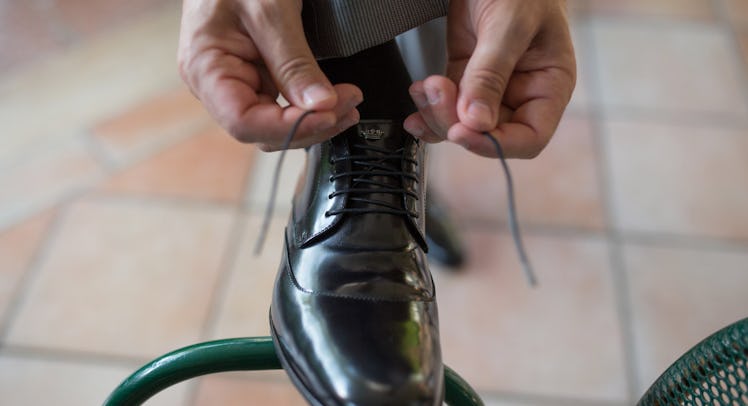Science Figures out Why Your Damn Shoelaces Are Always Coming Untied
Researchers out of UC Berkeley have gotten to the bottom of why we're always bending over to tie our shoes.

It’s a mystery that stumps both 5-year-olds and mechanical engineers: Why the hell do shoelaces keep coming untied? A new study out of UC Berkeley, which will be published April 12 in the journal Proceedings of the Royal Society A, takes on this weirdly underexamined issue and has posited a theory about why even the tightest lace-ups fail.
Scientists have studied how knotted structures fail under sustained loads, but never under shifting, dynamic ones. And that’s what the Berkeley researchers investigated. To do so, they set up a slow motion camera to film fellow grad student Christine Gregg as she hit the treadmill. After they filmed Gregg walking and running, they found that knot failure is a combination of two forces: gravity and inertia.
When a person is running, their foot hits the ground at seven times the force of gravity. That, coupled with the whipping inertia of the leg, creates a stretch and relax motion that loosens the knot. Laces failed at an even faster rate when weights were applied to the tips. “You really need both the impulsive force at the base of the knot and you need the pulling forces of the free ends and the loops,” said Christopher Daily-Diamond, co-author of the study. “You can’t seem to get knot failure without both.”
Most people who aren’t sailors or Boy Scouts learn how to tie their shoes one of two ways: The square knot and the false knot. The latter is weaker because the knots have a twist and do not lay flat. But even if you know a sheet bend from a running bowline, it doesn’t matter: Researchers found bow tie knots fail in the same way, although not necessarily at the same time.
“We were able to show that the weak knot will always fail and the strong knot will fail at a certain time scale, but we still do not understand why there’s a fundamental mechanical difference between those two knots,” said Oliver O’Reilly, Berkeley professor of mechanical engineering.
One takeaway is that when a shoelace knot starts to fail, it does so quickly. “The interesting thing about this mechanism is that your laces can be fine for a really long time, and it’s not until you get one little bit of motion to cause loosening that starts this avalanche effect leading to knot failure,” says Gregg.
This may be the first step towards science figuring out a knot that never comes undone (maybe some mythical double knot). In the meantime, there’s always velcro.
This article was originally published on